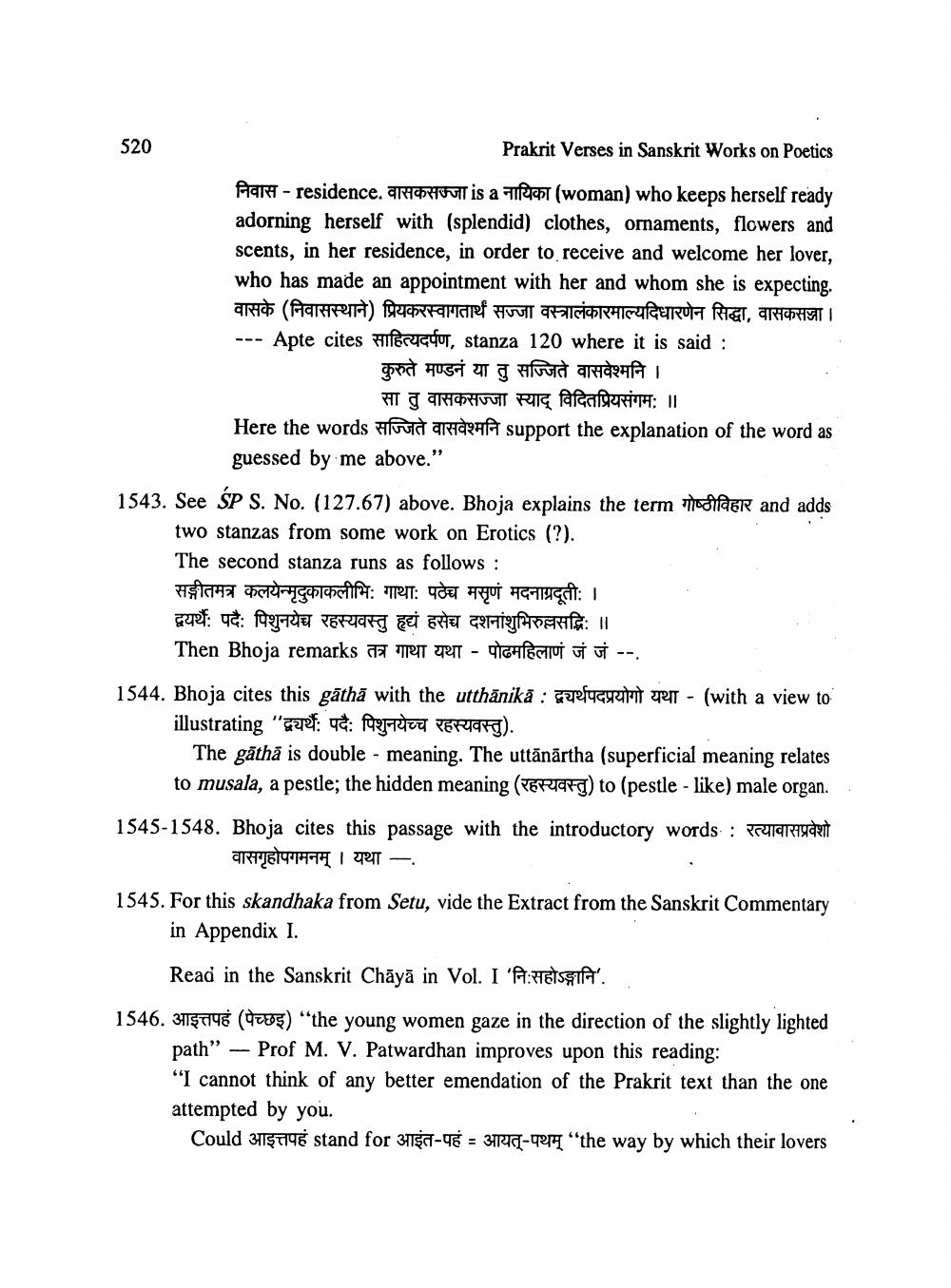________________
520
Prakrit Verses in Sanskrit Works on Poetics
निवास - residence. वासकसज्जा isaनायिका (woman) who keeps herself ready adorning herself with (splendid) clothes, ornaments, flowers and scents, in her residence, in order to receive and welcome her lover, who has made an appointment with her and whom she is expecting. वासके (निवासस्थाने) प्रियकरस्वागतार्थं सज्जा वस्त्रालंकारमाल्यदिधारणेन सिद्धा, वासकसज्जा । --- Apte cites साहित्यदर्पण, stanza 120 where it is said :
कुरुते मण्डनं या तु सज्जिते वासवेश्मनि ।
सा तु वासकसज्जा स्याद् विदितप्रियसंगमः ॥ Here the words सज्जिते वासवेश्मनि support the explanation of the word as
guessed by me above." 1543. See SP S. No. (127.67) above. Bhoja explains the term गोष्ठीविहार and adds
two stanzas from some work on Erotics (?). The second stanza runs as follows: सङ्गीतमत्र कलयेन्मृदुकाकलीभि: गाथा: पठेच मसृणं मदनाग्रदूती: । द्वयर्थ: पदैः पिशुनयेच रहस्यवस्तु हृद्यं हसेच दशनांशुभिरुल्लसद्भिः ।। Then Bhoja remarks तत्र गाथा यथा - पोढमहिलाणं जं जं --.
1544. Bhoja cites this gatha with the utthanika : व्यर्थपदप्रयोगो यथा - (with a view to
illustrating "द्वयर्थ: पदै: पिशुनयेच्च रहस्यवस्तु).
The gātha is double - meaning. The uttānārtha (superficial meaning relates to musala, apestle; the hidden meaning (रहस्यवस्तु) to (pestle - like) male organ.
1545-1548. Bhoja cites this passage with the introductory words : रत्यावासप्रवेशो
वासगृहोपगमनम् । यथा -.
का
1545. For this skandhaka from Setu, vide the Extract from the Sanskrit Commentary
in Appendix I.
Read in the Sanskrit Chāya in Vol. I 'नि:सहोऽङ्गानि'.
1546. आइत्तपहं (पेच्छइ) "the young women gaze in the direction of the slightly lighted
path” – Prof M. V. Patwardhan improves upon this reading: "I cannot think of any better emendation of the Prakrit text than the one attempted by you.
Could आइत्तपहं stand for आइंत-पहं = आयत्-पथम् “the way by which their lovers




